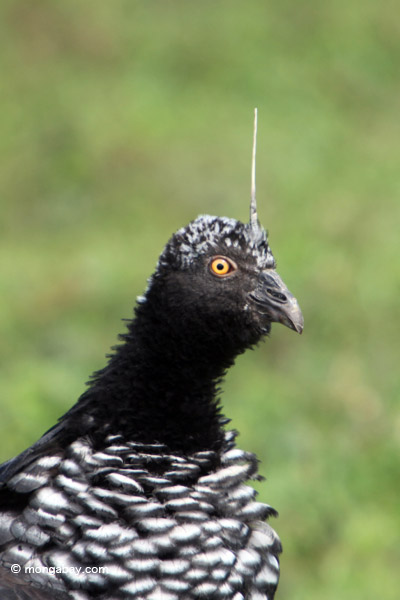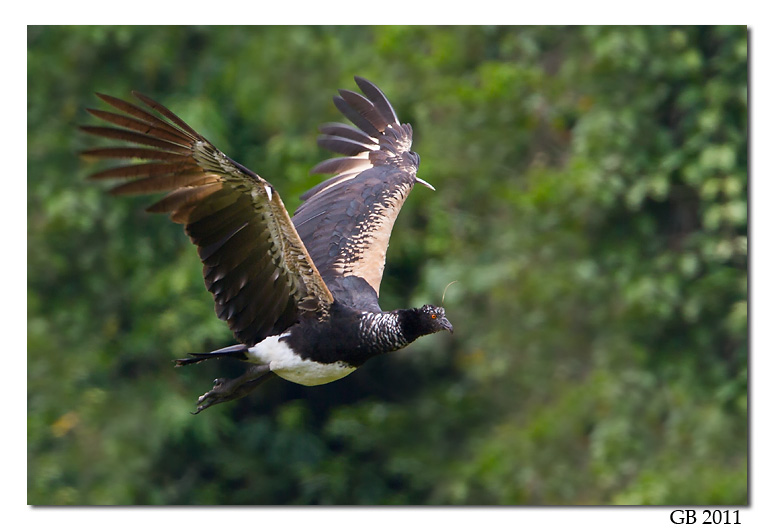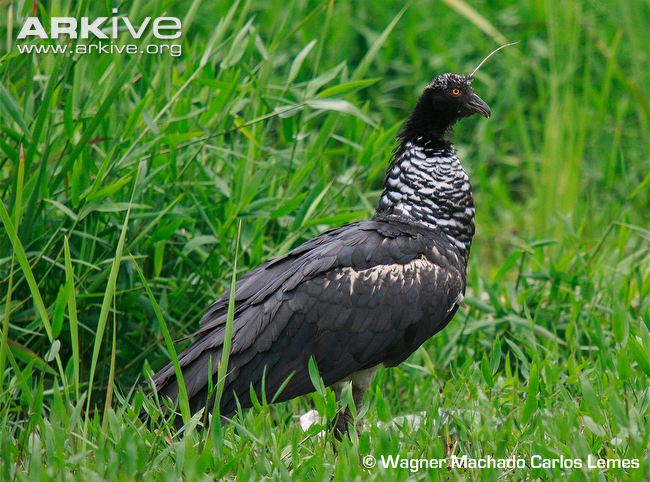
Anhima cornuta
TAXONOMY
Palamedea cornuta Linneaus, 1766, eastern Brazil. Monotypic.
OTHER COMMON NAMES
French: Kamichi cornu; German: Hornwehrvogel; Spanish:
Chajб Aсuma.
PHYSICAL CHARACTERISTICS
Body length of 34–37 in (86–94 cm). Body is colored greenish
black, with a white belly. A long, quill-like “horn” protrudes
from its forehead.
DISTRIBUTION
Widespread but local in Amazonian regions of Venezuela, the
Guianas, Colombia, Ecuador, Peru, Bolivia, and Brazil.
HABITAT
Inhabits wetlands in flooded tropical forest, such as oxbow
lakes, marshes, and swamps. It occurs as high as about 3,300 ft
(1,000 m).
BEHAVIOR
Has an extremely loud and distinctive set of calls. It swims or
walks on aquatic vegetation while feeding, and often roosts in
shrubs and trees.
FEEDING ECOLOGY AND DIET
Feeds on aquatic vegetation.
REPRODUCTIVE BIOLOGY
Builds a nest of plant materials, floating but anchored among marsh
vegetation. It lays two yellowish-white eggs, which are incubated
by both parents. The down-covered young leave the nest almost
immediately after hatching. Both parents care for the young.
CONSERVATION STATUS
Not threatened. Relatively widespread and abundant species,
although decreasing in abundance where heavily hunted.
SIGNIFICANCE TO HUMANS
Hunted as a source of meat and sometimes kept in captivity.
Photo Gallery of - Horned screamer




 Animalia Life
Animalia Life